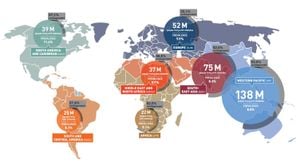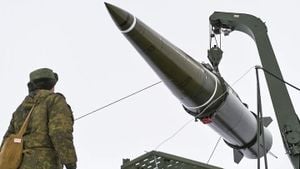The Australian commercial property market is on the rise, with projections showing transactions are expected to reach $44 billion by 2024, signifying an 11% increase from the previous year. This positivity follows two years of relatively dull market activity, yet recent reports indicate signs of improvement.
According to Dexus Research, transaction volumes have jumped 18% over the last six months compared to the same period last year. Analysts are cautiously optimistic, noting, “On a pro-rata estimate for Q4 2024, the value of transactions is forecasted to be around $44 billion, representing about 11% above the 2023 levels.” This estimate becomes even more optimistic when excluding the pending $9.8 billion AirTrunk data centre deal.
The data from Dexus shows even more encouraging trends. The average size of transactions has surged 60% year-to-date compared to 2023, and the proportion of institutional buyers has increased drastically from 34% to 64%. These shifts could suggest institutional investors are capitalizing on market corrections.
Despite the uptick, it’s worth noting the transaction volumes remain below average historical levels, indicating there's still work to be done before the market fully rebounds. Nevertheless, as prices stabilize, buyers seem to start perceiving value once more.
Interestingly, the retail property sector, which has been struggling for years, is now outperforming other segments of the market. Shopping centers are benefitting from relatively high yields, alongside improving rents and occupancy rates, which have positively affected valuations. Meanwhile, the office market has seen the weakest returns of -15.2% year-over-year, spurred by significant valuation declines. Yet even here, there are signs of hope, as data show negative trends may be easing.
Unlisted property funds returned -0.4% last quarter and -9.0% over the entire year, which reflects the challenging environment. On the other hand, the sector for listed real estate seems to be recovering; the Australian Real Estate Investment Trusts (AREITs) index rose by 24.6%, indicating renewed investor confidence. This uptick, occurring alongside broader equity market strength — with Australian shares showing returns of 7.8% up to the second quarter of 2024 — is encouraging for real asset confidence.
Turning our focus to Asia, notable developments abound. HMC Capital, for example, recently announced the completion of its A$2.1 billion ($1.4 billion) acquisition of Global Switch Australia, which is set to reshape its presence substantially. To support this acquisition, HMC is raising A$300 million through institutional placements, highlighting a growing focus on data centers amid increasing demand for digital infrastructure.
Also stirring the pot is Singapore's Golden Mile Complex, which is set for major changes. The Urban Redevelopment Authority has approved plans for adding four office floors and constructing a new 45-story residential tower named Aurea, breathing new life and opportunities for residents and businesses alike.
Meanwhile, the real estate market’s robustness is reflected outside Australia as well. Reports have noted rising activity across private housing leasing markets. Specifically, Singapore witnessed a 24.4% increase in leasing activity for private homes, driven largely by seasonal factors and corporate relocations.
Overseas, insiders report Chinese plans to significantly reduce homebuying taxes as part of fiscal measures aimed at revitalizing its tepid housing market. Proposed adjustments could see tax rates drop to as low as 1% from their current 3%, potentially stimulating the beleaguered market as it seeks recovery.
Moving back to Australia, the commercial property sector is certainly experiencing transformations. Signs of recovery and positivity spell promise for the upcoming years. Analysts and investors are watching this space with bated breath, hoping for sustained growth and enhanced market activity.
Overall, the Australian commercial property market's revival could serve as both inspiration and cautionary tale. While the challenges have been significant, the resilience shown through increased transaction sizes and growing institutional interest paints a picture of possibility. Investors might still be approaching cautiously, but they are certainly paying attention to the shifting dynamics across the region.



